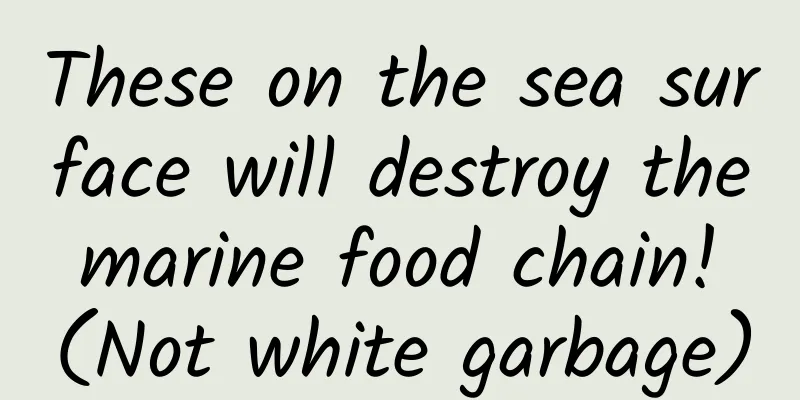These on the sea surface will destroy the marine food chain! (Not white garbage)

|
Today is World Oceans Day 2022. Let us protect the marine environment and safeguard our blue planet! Do not feed marine life at will; Do not buy or sell endangered marine life; Don’t use sunscreen that harms the ocean; Don’t use too many disposable plastic products; Do not discard garbage at will; Do not touch marine life; Do not discharge untreated sewage into the ocean at will; Do not step on the coral; Do not watch animal shows. We can do the "9 Don'ts" to prevent "man-made disasters" from harming the ocean, but did you know that there is another naturally occurring "natural disaster" that also poses a potential threat to the ocean! That is pumice. The Secret of Pumice Stone's Unsinkability There have long been rumors and records about floating stones. In Tianchi Lake in Changbai Mountain, my country, there has always been such a strange thing: wood sinks to the bottom of the water, while stones float on the surface. The so-called "wood sinks to the bottom of the water" refers to a special tree species in the local area - the mountain birch, which has a high density and can naturally sink in the water; while "stones float on the surface of the water" refers to a stone called "Jiangmo Stone" by the locals, which naturally floats in the water, which is very strange. Ge Hong, a famous alchemist in the Eastern Jin Dynasty of my country, wrote in his book Baopuzi: "Burn mud into tiles, burn wood into charcoal, and water foam into pumice stone. All of them remove their softness and brittleness and change them into hardness." The meaning is very clear. He believed that pumice stone was transformed from water foam, and used this as an example to illustrate that things in nature can change from soft to hard. Xu Xiake, a famous geographer in the Ming Dynasty, discovered this strange rock, which was large in size but very light, on Daying Mountain during his investigation in Tengchong, Yunnan. He recorded in his book "Xu Xiake's Travels": "The stone on the top of the mountain is ochre red in color and light in texture, shaped like a honeycomb, and formed of floating foam. Although it is as big as a man's embrace, it can be carried with two fingers. However, its texture is still hard, and it is really the remnant of ash." At this time, Xu Xiake had already discovered the close relationship between pumice and volcanoes. Pores on the surface of igneous rocks (Photo: Ma Zhifei) Pumice is actually a volcanic rock, usually light in color, such as white, cream, gray, etc., but also brown or black. It has a rough surface and is full of pores, which can account for more than 70% of the total volume. It has a very light specific gravity (0.3-0.4), which is why pumice can float on the water. Its chemical composition is similar to that of rhyolite, mainly silicon dioxide, which can reach 65-75%, aluminum oxide content of 9-20%, followed by calcium, magnesium, potassium, and sodium oxides. Pumice is basically all glassy, which means it has no crystal structure inside. The reason is that it is formed by erupting from a volcano under ultra-high temperature and high pressure conditions. When it erupts from a volcano, as the pressure drops rapidly, the solubility of the gas in the magma decreases, and various gases such as carbon dioxide will continue to escape. This process is the same as when we open a carbonated drink and see a lot of bubbles coming out. However, as the pressure decreases, the temperature of the lava also drops rapidly, and many bubbles are condensed in the rock before they can escape, so pumice is formed. Potential threat of pumice For ocean shipping, pumice is not a good thing. Pumice of all sizes emerge from the seabed, float on the sea surface, gather together, and are continuous. The thickness can reach tens of centimeters, like floating islands. They are called "pumice rafts" and can be more than tens of kilometers long. For example, in 2006, an underwater volcano erupted near Tonga in the southwest Pacific Ocean, and the pumice raft formed was more than 30 kilometers long. And once this happens, it is usually difficult to disperse in a short time. The pumice from the Krakatoa volcano in southwest Indonesia has been floating in the Pacific Ocean for 20 years and has not been completely dispersed. These stones often affect the normal passage of ports, and even damage ships, causing engine failures and navigation accidents. In 1986, a Dutch ship had an engine failure caused by pumice in the South China Sea. This time, the coast of Okinawa Prefecture in Japan was covered with a large amount of pumice, causing even more serious impacts. Not only were many fishing boats unable to go out to sea to fish, many diving tourism projects were also forced to be cancelled. Some experts even worried that it would affect the safety of several nuclear power plants on the coast. Marine biologists are also very worried about the appearance of pumice. They believe that a large amount of pumice floating on the sea surface will affect the direct sunlight to the seabed, which is not conducive to the growth of plankton and has a serious destructive effect on the marine food chain. In addition, floating pumice may become a "natural ferry" for some alien species, such as some shellfish, which float on pumice rafts to land or islands they have never been to before, and may become invasive species, threatening the survival of other organisms. Pumice is a versatile raw material Although pumice has many disadvantages to the marine environment, it is not worthless. People have found many uses for it. In Tengchong, Yunnan, locals once called it "oil residue stone" because its shape resembles the residue left over from oil refining. This stone is not only peculiar in shape, but also easy to carry and cut. Locals often use it to make bonsai, rockery or to carve handicrafts. In modern agricultural technology, it is also mixed with soil to cultivate plants, using its porous characteristics to provide plants with good ventilation conditions. For example, pumice is indispensable for growing succulents. Because pumice is light, strong, acid- and alkali-resistant, corrosion-resistant, pollution-free, and non-radioactive, it is an ideal natural green building material. It can be used to make concrete or blocks, which can not only reduce the weight of the building, but also have heat insulation and sound insulation properties. Concrete made from fine-grained pumice mixed with lime has been widely used as early as the ancient Roman era. Engineers at that time often used it to build tall domes in temples, as well as water conservancy facilities such as ditches. In the production and processing of jeans, one of the necessary processes is grinding and washing. On the one hand, it is to make the jeans softer and improve the feel, and on the other hand, it is to create a "weathered" and old feeling, creating the characteristics of jeans. In this process, a commonly used method is stone washing, and the stone used is pumice. What's more interesting is that in the beauty and foot therapy industry, pumice can also be used to grind the feet and remove dead skin and calluses on the soles of the feet. Pumice produced in Wudalianchi, Heilongjiang (Photo: Ma Zhifei) Pumice is also a commonly used Chinese medicine with the effect of clearing the lungs and reducing phlegm. According to classical medical literature, pumice is mainly produced in coastal areas such as Guangdong, Hainan, Fujian, Shandong and Liaoning in my country. It is produced in all seasons. Especially after a typhoon, people in coastal areas salvage it from the sea, wash off the mud and salt on the surface, and then dry it in the sun for use as medicine. Li Shizhen wrote in Compendium of Materia Medica: "Pumice is formed by the condensation of fine sand and water foam in rivers and seas over a long period of time. It looks like water foam and stalactites, with small pores like moth nests, white in color, weak and light." Based on this understanding, the ancients thought that it might be quite similar to human lungs, and so could treat lung diseases, so they believed that "its texture is exquisite, and it is the image of the lungs. It has a salty and cold smell, and its function is to moisten the lungs. Therefore, it enters the lungs to remove phlegm and heat in the upper part of the body, stop coughing and soften hard masses." In fact, from the perspective of modern science, the reason why pumice can be used as medicine is due to the various minerals it contains, such as aluminum oxide, potassium oxide, sodium oxide, ferric oxide, ferrous oxide, magnesium oxide and calcium oxide. |
>>: Why can the liver "remain forever young"? Scientists reveal its secret of immortality!
Recommend
Where did the milk tea that dominates the "drink world" come from? A journey across the continent
On a busy street or a quiet alley, holding a cup ...
Allergies, inflammation, skin diseases… Can we still take our children to the water park when it’s so “dirty”?
In the hot summer, the best way to cool off is to...
50-day Zhihu Pilot Academy fan increase and monetization plan_Dangxing Academy
Tips for increasing followers/selling products/mo...
ASO optimization experience: Tips for APP keyword optimization
When you’re developing your first product, you ma...
WeChat public accounts have added a comment function, and operators can choose to display selected comments in articles
According to the official notification of WeChat ...
How to optimize the account to stabilize oCPC second-order conversion?
With the popularity of oCPC , small and medium-si...
This kind of employee will either be a shareholder or a boss in the future!
1. Loyal people are not fired The company may fir...
Will mobile phones be equipped with Beidou navigation? Where else have we deployed Beidou?
Recently, a digital blogger revealed that the hig...
Is it healthy to have bowel movements every day? Is frequent and smelly farts a sign of colon cancer? You must understand these "intestinal" misunderstandings
The stomach and intestines are a pair of "go...
How about Estee Lauder skincare products? Are Estee Lauder skincare products good?
Estee Lauder is a brand loved by many women! It i...
Gifts from the Deep Earth: Why are hot springs hot? What other uses does geothermal energy have?
Produced by: Science Popularization China Author:...
How to choose the promotion channel for APP?
After the APP is launched, promoting the product ...
Can’t sleep, sleep poorly, not getting enough sleep… 20 ways to solve the “sleep dilemma”, save them now!
About 1/3 of a person's life is spent sleepin...
How are bridge piers in the sea built? Are they built first and then transported there?
Bridges are an important part of modern transport...









